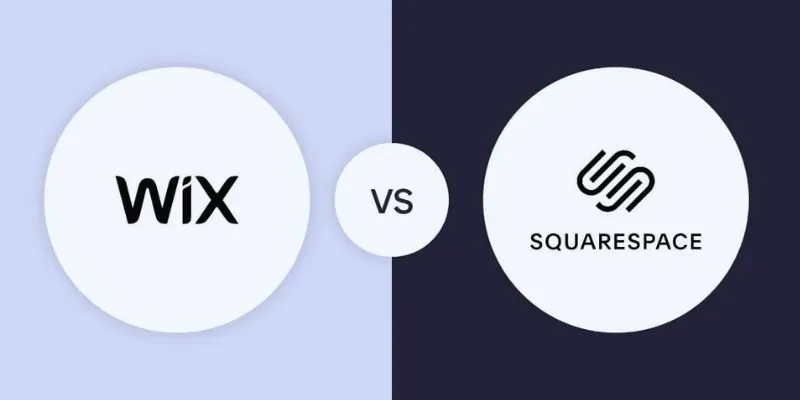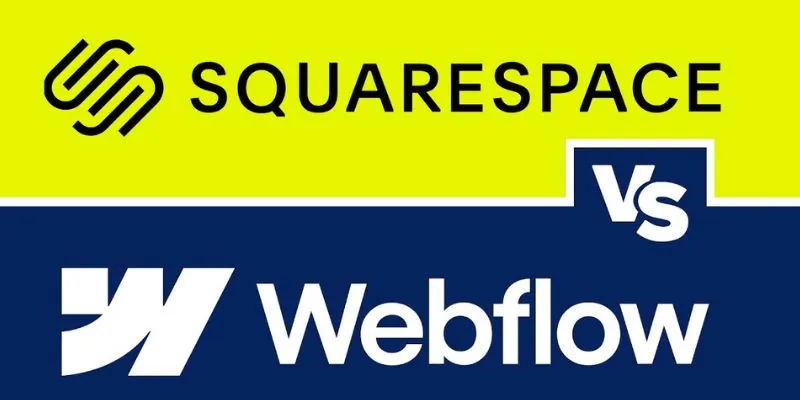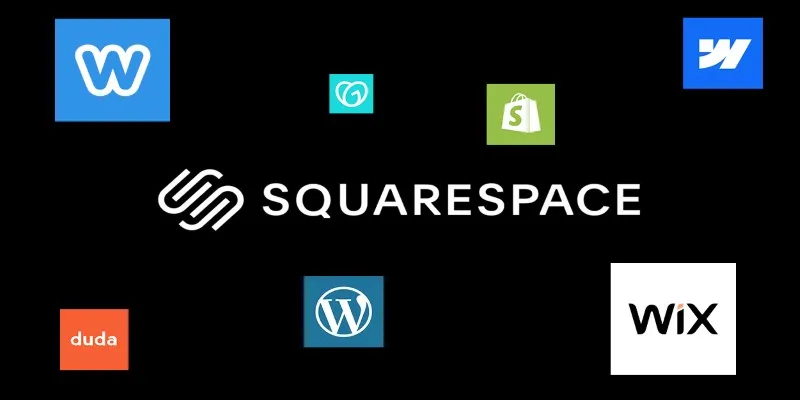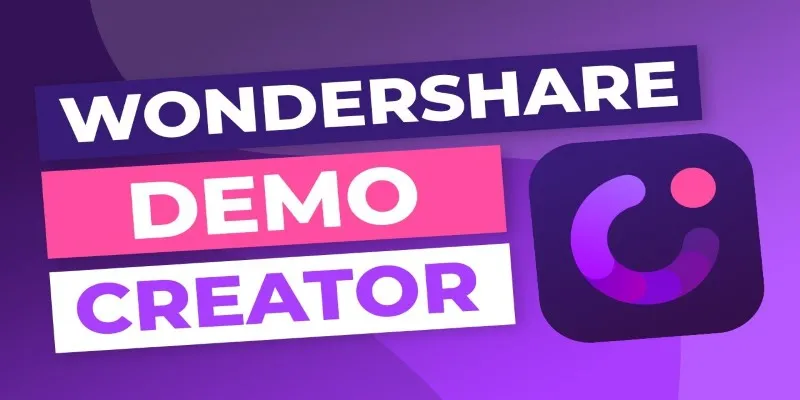Wix vs. Squarespace: Which Website Builder is Best?
Building a strong online presence starts with choosing the right website builder. Among the most popular platforms are Wix and Squarespace. Both offer elegant designs, drag-and-drop capabilities, and support for business purposes. However, their differences impact design freedom, performance, and user experience. Many beginners often wonder which platform is more suitable for them.
While some look for simplicity and organization, others desire creative flexibility. Comparing features guides users towards informed decisions. A competent website builder ensures a seamless and quick launch of a site. Examining both choices reveals where each excels and where each has limitations. Find the best drag-and-drop builder for your needs by understanding how different systems rank in this website builder comparison guide.

Breaking Down Key Differences Between Wix and Squarespace
Understanding the key features of Wix and Squarespace helps focus on the right fit for your needs. From design and ease of use to pricing and support, each aspect showcases how these platforms fulfill diverse purposes. Let’s explore each area closely to identify strengths and head-to-head comparison points.
Ease of Use
Beginners without coding knowledge will find Wix’s easy drag-and-drop editor ideal. Users can click and move elements freely to create layouts that match their vision, making the learning curve minimal. Wix also integrates Wix ADI, an artificial intelligence technology that automatically creates a website based on a few questions. It’s perfect for users seeking quick results without dedicating time to customization. Conversely, Squarespace uses a more structured editor. Its organization is more orderly, but layout alterations are less flexible. Elements snap into grids, maintaining a professional appearance. Beginners might need time to adapt, but they’ll appreciate the structured layout in the long run. Wix offers more editing freedom, while Squarespace provides a guided structure and a clean experience. Editing technique and personal preference determine ease of use.
Design and Templates
Squarespace is renowned for high-quality, modern designs that appeal to designers, photographers, and artists. Each template appears clean and professional, ideal for both desktop and mobile views. Users can customize fonts, colors, and styles to meet branding needs. Templates are categorized, making it easy for users to find a fit for their business. In contrast, Wix offers around 800 templates, providing more variety across various industries and applications. Templates are mobile-responsive and adjustable. However, once a template is chosen in Wix, it can’t be changed without rebuilding the site from scratch. Squarespace allows template switching at any time without content loss. Wix offers more creative freedom with its design flexibility, while Squarespace emphasizes clean, consistent design and layout. Although creative individuals might prefer Wix’s range, both platforms excel visually. Those seeking simplicity and elegance might gravitate toward Squarespace.
Features and Integrations
Wix boasts many built-in capabilities such as e-commerce tools, blogs, and booking systems. The Wix App Market offers hundreds of third-party apps for enhanced functionality. Users can easily integrate marketing tools, SEO applications, and social media plugins. For beginners, Wix’s artificial design intelligence speeds up setup. Squarespace provides strong built-in features, reducing the need for numerous third-party apps. It integrates blogging tools, galleries, email campaigns, and simple e-commerce facilities seamlessly. Squarespace allows easy integration with tools like Google Workspace, Instagram, and Stripe, though it offers fewer third-party plugins than Wix. Those seeking advanced capabilities might find Wix more flexible, while Squarespace focuses on providing polished built-in solutions. Both systems offer essential tools for creating modern websites, but Wix might be more suitable for those requiring more freedom through additional integrations.
E-commerce Capabilities
Squarespace supports online stores with inventory management, secure checkout, and product pages, making it great for small businesses, artists, or service providers offering a few products. The platform enables discount codes, memberships, and digital product sales, along with access to valuable commerce analytics. Wix also provides robust e-commerce solutions for both digital and physical products. It supports shipping rules, abandoned cart recovery, and multiple payment gateways. Wix’s e-commerce tools are scalable, making them suitable for growing businesses. Advanced marketing technologies allow users to boost sales through integration. While both builders impose no additional fees, standard payment policies still apply. Squarespace is ideal for creatives seeking simplicity and visual design, whereas Wix suits users who want to gradually expand their online store. Store size and growth goals determine the choice. Both manage basic e-commerce effectively, with slight differences in scalability.
Pricing and Plans
Wix offers a free plan with ads, perfect for testing before upgrading. Premium plans provide advanced tools, larger storage, and domain connection capabilities. Wix offers flexible pricing, ranging from personal websites to advanced e-commerce plans. Squarespace doesn’t offer a free plan, but its paid tiers include all features without needing extra apps. Users receive SSL security, templates, and customer support across all tiers. Although its cost starts somewhat higher, Squarespace provides an all-in-one solution. For some app integrations, Wix users might need to pay more, but Wix allows users to scale quickly by varying their pricing approach. Wix might have better entry options for budget-conscious users, while Squarespace offers excellent value with consistent functionality across fewer pricing levels. Knowing your needs will help you choose the most affordable option.

Customer Support and Community
Wix offers 24/7 customer support with options for live chat and phone assistance in more premium subscriptions. Users can also access a comprehensive Help Center filled with tutorials and advice. Community forums and user groups are available for peer support. Squarespace provides live chat during weekdays and 24/7 email support. Its support materials offer a thorough understanding of features and are well-organized. The primarily visual knowledge base enables quick problem-solving. However, Squarespace lacks phone support, which may be a drawback for some users. Both platforms feature webinars and active online communities. Users can also find countless video tutorials on platforms like YouTube. For users seeking real-time assistance, Wix offers additional support channels. Squarespace provides polished, more organized documentation. Both systems offer excellent customer support, but Wix provides more connection avenues for its users.
Conclusion
Wix and Squarespace are strong contenders in the website development realm. Wix offers more pricing flexibility, app options, and creative freedom, while Squarespace stands out with professional consistency, simple features, and elegant style. Your choice depends on whether you prioritize structured design or creative flexibility. Users seeking the best drag-and-drop builder will find Wix ideal. Squarespace appeals to those seeking a beautiful, beginner- easy website builder. Use this website builder comparison guide to make your decision based on your goals, growth strategies, and design preferences.
Related Articles

The 4 Best AI Website Builders for Effortless Website Creation

Which Are The Best Database-Powered App Builders for Seamless Development?

The Ultimate Guide to Website Builders: Wix, Squarespace, Shopify, and Beyond

Exploring The 5 Best Canva Alternatives for Creative Projects

The 6 Best Construction Management Software Options to Streamline Your Projects

Whitelisting Guide: Allow Safe Websites Blocked by Antivirus

The Best Slack Apps for Your Workspace in 2025: An Ultimate Guide

Which Are The 6 Best PDF Editor Apps To Simplify Your Workflow: A Guide

Webflow vs. Squarespace: Which Website Builder is Best for Your Business

The 6 Best Squarespace Alternatives in 2025 for Custom, Creative Web Design

Upgrade Your Email Experience: The 7 Best Email Clients for Windows

The 8 Best Event Management Software Platforms to Simplify Your Planning
Popular Articles

Coda vs. Notion: Choosing the Best Workspace App in 2025

Simple Steps to Combine FLV Files into One Seamless Video

The Best Employee Onboarding Software: Transforming New Hire Experiences

Top Digital Drawing Apps Every Artist Should Try

Top Note Taking Apps for iOS Devices This Year

Is Wondershare DemoCreator Worth It? A Full Performance Review

How to Stay Productive: Essential Tools for Remote Workers in 2025

How to Shoot a Smooth Time Lapse Using GoPro

ClickFunnels vs. ActiveCampaign: A Comprehensive Comparison for 2025

Bootable USB Creation Made Easy: 3 Tools You Should Be Using Now

Step-by-Step Guide to Creating and Presenting Slideshows on iPad

 mww2
mww2